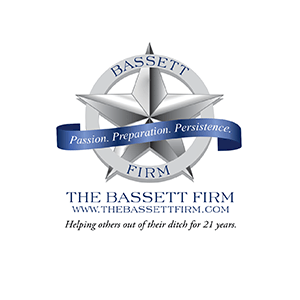In recent years, Texas Courts have afforded increasing latitude in the use of Texas Rule of Evidence 1006, which allows for the use of a summary, chart, or calculation to prove the content of voluminous documents. The rule itself has traditionally been used to provide damages calculations and similar summaries, but the rule is broadly written and Courts have been hesitant to overturn judgments based on the use of even atypical Rule 1006 summaries. This makes Rule 1006 a valuable and persuasive tool for trial attorneys.
Rule 1006 provides that:
The proponent may use a summary, chart, or calculation to prove the contents of voluminous writings, records, or photographs that cannot be conveniently examined in court. The proponent must make the originals or duplicates available for examination or copying, or both, by other parties at a reasonable time and place. And the court may order the proponent to produce them in court.
Most importantly, while a proponent must make the underlying documents available for inspection, and the Court may order the proponent to produce them in court, the underlying documents need not ever actually be admitted into evidence or even produced (e.g., if no request is ever made) to be used as proof in a civil trial.
More importantly, however, documents which may appear otherwise inadmissible, such as expert reports, can theoretically be utilized as Rule 1006 summaries in whole or in part. And, a finder of fact can explicitly rely on Rule 1006 records in awarding damages or making other findings. See, e.g., Montes v. Filley, 359 S.W.3d 260, 266 (Tex. App.-El Paso 2011, no pet.).
Two unpublished opinions in recent years, Garraway v. State, 2017 Tex. App. LEXIS 3126, 2017 WL 1404726 and Williams v. Crawford, 2018 Tex. App. LEXIS 1641, have suggested that Rule 1006 is ripe for creative use at trial as an advocacy tool.
Garraway v. State:
Where records are voluminous, even if they have been admitted into evidence, summaries may be admitted and used as proof at trial. The Garraway Court found no error where the trial court admitted 2 separate, and apparently conflicting, summaries of the same voluminous documents. Garraway v. State, 2017 Tex. App. LEXIS 3126, at *12-13 (Tex. App.-Austin Apr. 11, 2017, no pet.) In reaching this ruling, the Court simply stated that the exhibits at issues were within the “zone of disagreement.” Id. at *13. They moreover held that any error in admitting the exhibits was harmless given that the underlying documents, and witness testimony, were available to the finder of fact. Id.
Although the exhibits admitted were either inaccurate or were colored by argument or suggestion for one party’s position, the Court nevertheless found admission of the exhibits to be within the trial court’s discretion. Id. Rule 1006 itself makes no explicit requirement that the summary be impartial, and appears to contemplate that it will not be given its requirements that the underlying documents be available for examination and production. T.R.E. 1006. This ruling, and the text of the rule itself, suggests that a party is entitled to some degree of latitude in utilizing a Rule 1006 exhibit not just to summarize evidence but also to advance their position in the lawsuit.
Williams v. Crawford:
The Williams Court offers a ruling that suggests that Rule 1006 summaries can be used even more creatively in presenting evidence. In Williams, the Appellant complained that the trial court had admitted two expert reports, documents which generally are not admissible at trial. Williams v. Crawford, 2018 Tex. App. LEXIS 1641, at *38 (App. Mar. 2, 2018). However, the Appellee argued that the exhibits in question were not in fact expert reports at all but rather were summaries of the testimony the experts had presented at trial and deposition. Id. at *39.
The Williams Court declined to decide whether the expert reports at issue truly qualified as Rule 1006 summaries, and noted that Rule 1006 provides for summary of “writings, records, or photographs” but not testimony. Id. at *39-40. Nevertheless, it held that any error which could be ascribed to the admission of the exhibits would have been harmless given that the authors of the report offered testimony at the trial. Id. at *40.
The Williams opinion therefore does not stand for the proposition that the practice, as used in that case, is necessarily proper or improper. However, there are numerous contexts in which a party may wish to have an expert present his opinions in writing for the fact finder, not least because the expert may be able to do so more concisely and persuasively than the exhibits underlying the writing. And, if a trial attorney is able to prevail upon a court to allow the use of such an exhibit, Williams certainly stands for the proposition that the verdict will not be overturned based on such a decision.
Conclusion:
These cases, though unpublished, highlight that Rule 1006 is written very broadly and can accordingly be used creatively by trial attorneys to present evidence in a manner most conducive to their client’s positions. Medical records and their contents, so long as they are voluminous and admissible, would certainly qualify as “writings” that could be summarized. The Williams opinion at least suggests that an expert could craft an admissible report, so long as he does so couched in the form of a summary of the voluminous records he has summarized. When coupled with the Garraway case, which suggests that a Rule 1006 summary may be slanted towards the positions held by its proponent so long as it remains in the “zone of disagreement,” Rule 1006 could be used more expansively as a persuasive tool in the trial context. This would seem to be especially true where the underlying documents being summarized are admitted and discussed in testimony, as both cases suggest that utilization of Rule 1006 summaries in this context is essentially within the discretion of the trial court.

